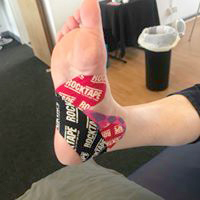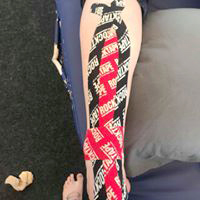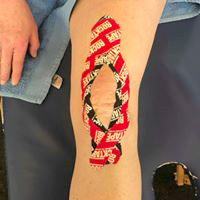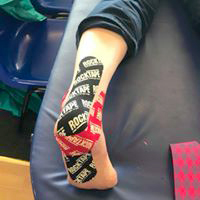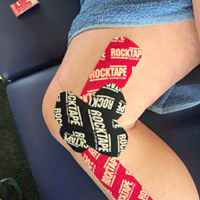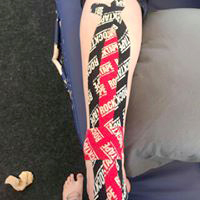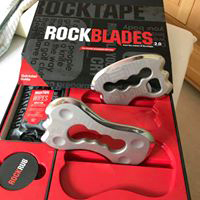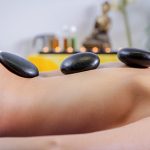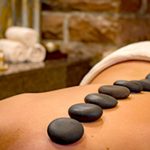Sports Massage
So what is Sports Massage and why have one?
The main purpose of sports massage is to help alleviate the stress and tension which builds up in the body’s soft tissues during physical activity, be that sporting activity or everyday activities such as gardening. It can also help alleviate postural stress and related issues.
We can all suffer from minor injuries and lesions in our muscles due to over exertion or overuse and sports massage can break these down quickly, thus preventing more serious injuries occurring. It can also help to prevent injury, enhance your performance and aid recovery from many issues such as muscle strains and sprains and other conditions such as plantar fasciitis.
Remember you don’t have to be injured to benefit from sports massage. Having regular sports massage as part of your training programme is hugely beneficial and can help maintain and enhance your performance.
Kinesiology Taping
I am qualified in applying kinesiology taping. This helps to manage and help repair sports injuries and assist with treating conditions such as plantar fasciitis.
The Kinesio Taping Method is felt to cause physiological effects on several body systems. The systems affected by the body are thought to include the circulatory/lymphatic, neural, muscular, and fascial systems, as well as the joints. Kinesio Taping is currently being used by therapists to change muscle tone, move lymphatic fluids, correct movement patterns, and improve posture.
I trained in this practice with the Body Master John Gibbons at Oxford University Campus.
Rock Blades
These interesting instruments are called Rock Blades and are used in instrument assisted soft tissue massage. Come along and give them a try. I promise they are not as painful as they look but assist in giving a more thorough and deeper massage. They are primarily used for breaking down fascia restrictions to allow for greater range of movement. So they are particularly useful on muscle groups such as those of the shoulder, quads, hamstrings and gluteal areas.
Hot Stone Massage
I have recently been awarded a Diploma upon successful completion of my training in the use of Hot Stones.
Hot stones, warmed by fire, have been used by native Americans to give relief to aching muscles.
In the present-day massage therapy practice, hot stone massage is a speciality massage where smooth, heated stones are used by the therapist by placing them or rubbing them on the body. The heat from the stones leads to deep relaxation and to warming up of the tight muscles enabling the therapist to work more deeply and more quickly.
For hot stone massage therapy, the therapists mostly use basalt stones
mainly because of their various properties that include their
non-porosity, their smoothness and their ability to retain heat longer
than any other type of stone. Moreover, these beautiful stones come in
different sizes. For performing specific massage strokes, the massage
therapist places smaller tooling stones and for treatment for a longer
time, she places the larger placement stones at one spot of the body.
Moreover, the therapist gives slow and gentle strokes in a way that
people feel grounded, comforted and calm. Some massage therapists use
the energy lines or meridians of the body to place hot stones for energy
work. By doing so, movement of energy known as qi or chi is stimulated
and in this way the effects of stress are eliminated and healing is
facilitated. Hot stone massages also help in releasing toxins, relieving pain and improving circulation. People who have experienced massage with heat get so many healing properties that they keep coming back for these massages.
Benefits of Hot Stone Massage:
- Relieve muscle spasm, pain, tension & improve the muscle relaxation.
- Releases toxins & improves skin appearance
- Significantly reduce stress & anxiety
- Improves blood circulation and flow of energy
- Helps to promote better sleeps
- Helps to reduce & manage stress
- Helps to create a sense of comfort and warmth
- Helps in relieving the symptoms of autoimmune diseases
- Helps in increasing joint flexibility



